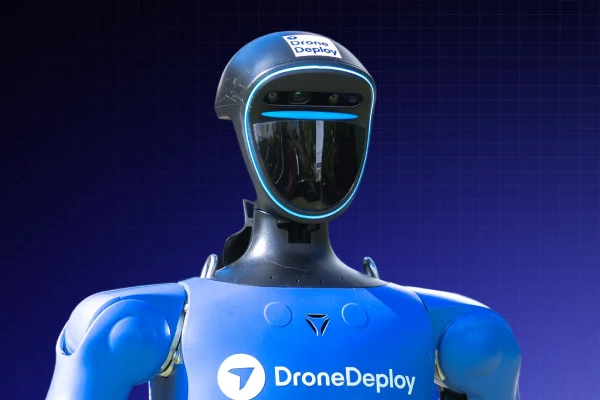5 Ways Drone Technology Will Help Create a More Sustainable Future

Quick Summary
With the passage of the Inflation Reduction Act, America has kickstarted its transition toward a clean energy future. At the same time, companies across industries are turning towards drones, robotics and AI to meet growing demands and increase operational efficiencies. But how can drones in particular be deployed to support the country’s effort of establishing clean energy alternatives and reaching climate goals?

Using drones to rapidly scale green energy projects
The Inflation Reduction Act expands tax credits for clean energy projects. These provisions enable the US to accelerate and scale both commercial and residential solar developments.. However, scaling is still challenging and many projects are hitting roadblocks - supply chain disruptions have reduced access to many critical materials and, on top of that, inflation is the highest it's been in 40 years.
Fortunately, drone technology can curb some of these challenges. A single technician with a drone can perform an accurate roof survey three to four times faster than a team of surveyors. There is also the added benefit of keeping the technician safely on the ground. For example, one rooftop solar company used DroneDeploy for image capture and analysis, reducing their design turnaround time two-fold. DroneDeploy customers leverage these gains in efficiency and respond to the rapidly growing demand for clean energy by performing more roof assessments and installing more solar panels using mapping and survey data.

Deploying drones (and robots) to capture methane leaks
While the majority of the Inflation Reduction Act is incentives, there are also provisions to curb methane emissions through taxes and added scrutiny. Reducing emissions in the oil and gas industry will play a significant role in meeting climate targets. Methane emissions are 25 times more potent than CO2, meaning that monitoring and reducing leaks throughout the oil and gas lifecycle can have a very high impact. Until now, measuring and finding these leaks has been an elusive and challenging task; however, drones and robotics equipped with sensors provide a burgeoning new high-accuracy tool for finding and eliminating critical infrastructure leaks. These tools will enable operators to detect leaks early, easily submit compliance documentation, and reduce the amount of time spent on inspections, saving precious time and money.
Want to learn how drone technology can help you meet your sustainability goals?
Using drone technology for sustainable land management
In the Inflation Reduction Act, voluntary conservation programs got a huge boost – to the tune of $8 billion in program funding. These conservation programs provide unique incentives for farmers and land managers to receive a return on their investment in exchange for implementing more sustainable land use practices.
To take advantage of this new incentive, land managers will need to implement new conservation programs like planting cover crops and restoring embankments near waterways. Additionally, these land managers will need to document the current and future state of their farmland. That’s where drones come in. A single drone flight can cover a 100-acre field in under an hour, providing a quick and low-cost method of ensuring compliance and alignment with program goals. In addition, the maps created from drone data can rapidly reveal crop health data, current growth patterns and more for ongoing monitoring and optimization.

Using drone technology to reduce construction waste and rework
Throughout the Inflation Reduction Act there are incentives to build resilient and green infrastructure. Rework in construction is both a business problem and an environmental one. Delays caused by inaccurate data can often lead to confusion and countless revisits during the pre-bid process. When these types of issues arise, both cost and material are wasted and owners are left dissatisfied. As much as 30% of all building materials delivered to a typical construction site can be wasted, and almost half the waste in rework materials can be tied back to poor communication and bad data. Additionally, gathering accurate and recent site conditions, and communicating with contractors is a time-intensive part of early-stage projects, furthering the potential for waste.
Autonomous reality capture with drones can create much more accurate data for your team, ensuring it is all saved in one place for better collaboration, more effective communication and fewer site visits. Individual DroneDeploy customers have saved anywhere between $10,000 and over $1,000,000 by catching single issues with drone data. These savings not only reduce cost but build a more sustainable construction industry by avoiding waste and rework.

Using drones to cut down emissions from piloted-flight
Drones are replacing piloted planes for many survey and inspection needs. Small flights are often used in project development to get a highly accurate view of site conditions and perform inspections at height.
Drones provide a much less energy-intensive way of collecting data. For instance, rechargeable batteries add to a more fuel-efficient solution, especially over the high emissions and cost of more traditional methods. One study found that using drones for package delivery emitted 84% less greenhouse gas than diesel trucks and that drones were 94% more energy efficient.
In addition to using less energy, drone data can be used to create digital twins, which brings the field virtually to your desk. These digital twins are highly accurate, which enable users to perform inspections and collaborate from their computer, reducing the need for excessive “windshield time” (and emissions) spent traveling to remote sites.
Want to learn more about how you can use drone technology to transform the way you work? Speak with a member of our team!
FAQ
Related articles
Ready to manage your data from the very start?
Book a quick call to see how DroneDeploy streamlines capture from construction through building ROI.
.svg)
.png)


